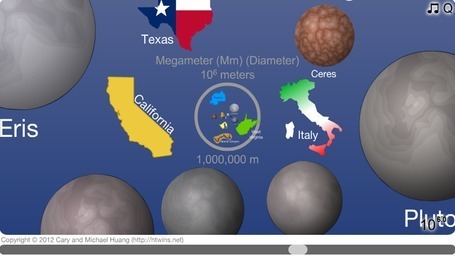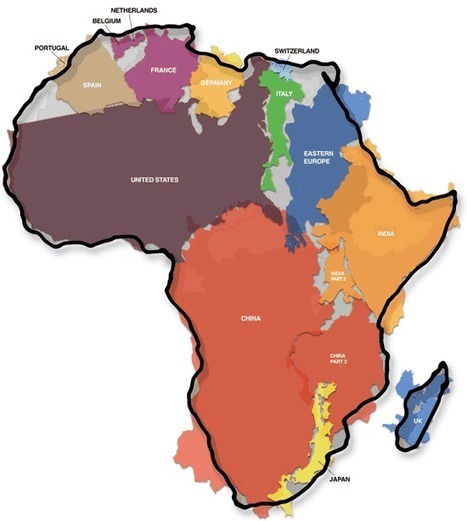Get Started for FREE
Sign up with Facebook Sign up with X
I don't have a Facebook or a X account
 Your new post is loading... Your new post is loading...
 Your new post is loading... Your new post is loading...

Joe Andrade's curator insight,
July 7, 2013 10:08 PM
This is a great method of teaching some of the principals behind understanding spatial analysis. An important skill in understanding the world we live in.
Matthew DiLuglio's curator insight,
September 10, 2013 11:07 AM
I thought it was funny that even though many of the published telescopically captured photos are composites of different lens and filtered shots of a single item, or area of space, that if that item or area were really to be examined, to get more of a feel for the universe as it truly is rather than how we would ordinarily see it, would be to consider it from an infinite number of perspectives. Rather than just one perspective, as humans are limited to, the universe has many eyes. Instead of taking many photographs from the same perspective, we could, as many modern scientists do, do in-depth scans using X-ray technology, and magnetic resonance, assessing composition, to create a full picture of all angles, zooms, and subjects of everything, in order to determine more about origins and mysteries of the universe. I would endorse that to be done on an infinite scale, complete with documentation of all spatial anomallies and occurances, such that completion of understanding could, in theory take place by crossing the gap of the notion of infinity by utilizing technology to one's advantage. This would allow us not to waste time looking at every detail, but to have something with more processing capabilities understand it for us, and communicate that infinity in a way that we could see it. There are dangers of using X-ray technology, and it doesn't seem like NASA really cares about (as one could hope) not harming alien life, or planting life on other worlds, etc. I would more forcibly endorse that we do not try to observe other worlds and the Universe at all, because god forbid, some alien colony finds us and sees that we are not only cuturally divided, we are a torn world, shattered in the aftermath of the destruction that comes from our selfishness and pride that has long dominated the hearts of men. They might be disappointed, and they should be. |

Nick Lesley's comment,
May 27, 2014 3:42 PM
i thought this was very cool and interesting to see different classes all around the world and how their culture is i would really like to see a video on the classes to see how they learn...cool article and good pictures

Maria la del Varrio's curator insight,
December 5, 2014 11:01 AM
It is incredible big, but unfortunately most of the north area is cover by the big Sahara and most of the are is typically unfertilized. 
Jason Schneider's curator insight,
March 9, 2015 4:29 PM
As we can see, there's a little overlapping here and some empty spots but it's pretty accurate. The United States and China are in the top 5 largest countries of the world list and they still fit in the 2nd largest continent of the world, Africa. I'd like to see the size comparison between Africa and Russia. I did some research on that and it turns out that Russia is a little over half the size of Africa, maybe the size of the combination of the United States and China. |
















(Africa topic 2)
Asking what lies within a name is more of a subjective question than it is objective. Yes, all names have some sort of meaning or origin behind them, but it isn't always relevant. I doubt that my friends really ever wonder why my last name is Hobson; they just use it to refer to and identify me. On the other hand, a genealogist might take great interest. Similarly, it seems as if the dispute of regional names, such as Israel and Palestine, has a similar contradiction: some just want to refer to the region in the easiest, most familiar way possible, while others take it directly to heart. Perhaps more of a distinction should be made between physical and political naming conventions. An example would be classifying Israel and Palestine to both be in the physical region of Palestine, whereas certain areas (which are still being debated) should be referred to as Israel when speaking politically.
While this comic is clearly done in jest it really highlights the importance a name holds to people. Their are some issues which heavily divide people, in this case the tensions between Israel and Palestine and lead to the formation of very strong opinions. With these opinions come the aspect of properly assigning a title to them. In some cases the same thing is known by many names and is highly contested.